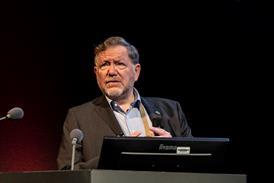Interview: Hauke Richter, Game of Thrones

One of the key factors in making Game of Thrones a worldwide television phenomenon is the style and look of the sets. Art director Hauke Richter spoke to IBC365 to reveal the secrets behind the show’s designs.
Art director Hauke Richter has built up an impressive CV since he graduated with a degree in production design from the London Film School in 1993. His work has included commercials, music videos, TV and films, including working under Oscar-winning designers John Box and Roy Walker. His credits now include his artistic direction for seasons 4 to 8 of HBO’s TV blockbuster Game of Thrones – work that has already won four Primetime Emmys and three Art Directors’ Guild Excellence in Production Design awards for the GoT art direction team.
Speaking to IBC365, while prepping for a Game of Thrones ‘script to screen’ session at IBC2018, Richter reveals he became involved in the GoT project after season 3 thanks to a tip-off from a friend who was about to become supervising art director on Game of Thrones.
“Basically there was a change of art department after season 3,” he says. “There was a production designer involved who kicked the whole thing off and created the initial look for the whole show which, when we took over with Deborah Riley heading the art department as production designer, we all changed a little bit. We brought a lot more modern architecture into the whole look of the film, going away from the medieval and renaissance architecture that the previous designer had brought in, but we still had a lot of medieval [sets].”
The design process
When quizzed about the design process at the start of any series of Game of Thrones, Richter replies, “We normally sit down and break down the whole job. For a season of Game of Thrones, which is a mighty show, you have something in the region of 100 different sets to create. That can be anything from tiny set-ups or set-ups which involve very little art direction. This might be in a forest but will require other aspects like ‘snowing up’ the forest, or the greens people have to cut branches away so that horses and riders don’t get stabbed by branches when they’re riding through the trees. Things like that are small but important.
“They can also very much involve our services, which is creating a whole look,” he continues. “For example, you might need to create a street set for a particular town or you have to create a castle. We basically sit down and…
Read the full article

Sign up to IBC365 for free
Sign up for FREE access to the latest industry trends, videos, thought leadership articles, executive interviews, behind the scenes exclusives and more!
Already have a login? SIGN IN




















